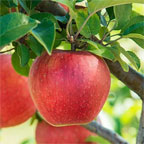- Q.Sycamore Seeds - Have been living next door to three sycamore trees for 16 years and never had any problems. This year, almost ...
- Q.Trees And Vines - Will a Virginia creeper injure a 50-60 year old sycamore tree?
- Q.Transplanting Small Sycamore Tree - I have a large sycamore tree in my backyard. Now I have several very small, but growing very fast, sycamore ...
- Q.Need Help With My Sycamore Tree - Need help with my sycamore tree. It has a hollow spot in the trunk from the ground to about 12 ...
- Q.Why Is Tree Already Losing Its Leaves - I live in Falls Church, VA. - Mayfair House Apts. - and the sycamore tree in front of my building ...
- Q.Sycamore Tree Seeds - I would like to know exactly which part of the "ball" from sycamore trees is the actual seed? Is ...
- Q.Sycamore Trees - Can it be necessary to fell a beautiful old (more than 30 yrs old) tree, as it is shading 'a ...
Q.Sycamore Seeds
Have been living next door to three sycamore trees for 16 years and never had any problems. This year, almost overnight, the sycamore seeds have taken root and now my front lawn looks like a sycamore farm. If I mow them, will they come back, or how do I get rid of them? You can hardly see the grass; it's unbelievable. Any ideas?
- A.
The bad weather this winter likely sent the trees into "survival" mode where they over produce on seeds when they have been through weather that could have killed them. To tell the truth, the best thing that you can do is to mow frequently. This will force the seedlings to continually try to recover themselves which uses up energy and they will eventually die from the effort. Other than that, your only other option is hand pulling.
Was this answer useful?00
Q.Trees and Vines
Will a Virginia creeper injure a 50-60 year old sycamore tree?
- A.
Not right away, it won't. Virginia creeper is one of those plants that does little harm if kept in check, but if left to its own, it can kill a tree that large over the course of several years. You just need to make sure you are routinely removing it from the tree to keep it from doing that.
Was this answer useful?00 Q.Transplanting Small Sycamore Tree
I have a large sycamore tree in my backyard. Now I have several very small, but growing very fast, sycamore trees cooming up. I would love to transplant these small ones to another part of my property. Can you give any guidience as to when and how to transplant these?
- A.
These suckers or weed trees can be transplanted and have a good chance of surviving. You need to make sure that they have some roots of their own when you move them. Depending on their size, you may want to pot the little trees up for at least a whole season before planting out in the yard. This way they will be able to form stronger roots.
Was this answer useful?00 Q.need help with my sycamore tree
Need help with my sycamore tree. It has a hollow spot in the trunk from the ground to about 12 inches high. I don't know if I need to treat it or leave it alone or even fill it with dirt or real good soil. Please help me, as I don't want it to die. It has been there a very long time and is taller than my house.
- A.
This article should answer your question: https://www.gardeningknowhow.com/ornamental/trees/tgen/patching-tree-hole.htm
You might want to have a certified arborist check your tree. You can contact your local Extension Service to help you find one. This link will help you locate the E.S. https://www.gardeningknowhow.com/extension-search/Was this answer useful?00 Q.why is tree already losing its leaves
I live in Falls Church, VA. - Mayfair House Apts. - and the sycamore tree in front of my building is losing its leaves. Is it due to so much rain or too much water?
- A.
Certainly environmental stresses can cause leaf drop on deciduous trees.
It is likely not a serious issue, just the tree showing it's stress to the heavy rains.
Remove any dropped leaves to help eliminate any fungus issues.https://www.gardeningknowhow.com/ornamental/trees/sycamore/sycamore-tree-care.htm
Was this answer useful?00 Q.sycamore tree seeds
I would like to know exactly which part of the "ball" from sycamore trees is the actual seed? Is it the end of the "hairy" fibers or the hard little ball in the middle of the entire ball? I've been collecting them, and my husband thinks it's the "hair" like spikes, and I think it's the hard seed in the middle of the ball. I've attached a photo, left or middle? Thank you for your time. Trish Tiedeman
- A.
Thank you for your quick answer. It's ok that hubby is right, this time. :D So the little middle hard ball is useless?
Was this answer useful?00 - A.
Sorry Trish, your husband is right on this one!
The seeds are called Achenes, they are 'hairy' so that they are very light and can be carried by the wind or float in water.
Here are some links with more information.https://www.gardeningknowhow.com/ornamental/trees/sycamore/sycamore-tree-care.htm
http://www.fcps.edu/islandcreekes/ecology/american_sycamore.htmWas this answer useful?10 Q.Sycamore trees
Can it be necessary to fell a beautiful old (more than 30 yrs old) tree, as it is shading 'a garden'? Are these trees a problem for any other reason, apart from 'shade'?
- A.
The American Sycamore does have some allelopathic properties.
The effects of the chemical can come from the roots and the fallen leaves.
https://www.gardeningknowhow.com/garden-how-to/info/allelopathic-plants.htm
Was this answer useful?00



